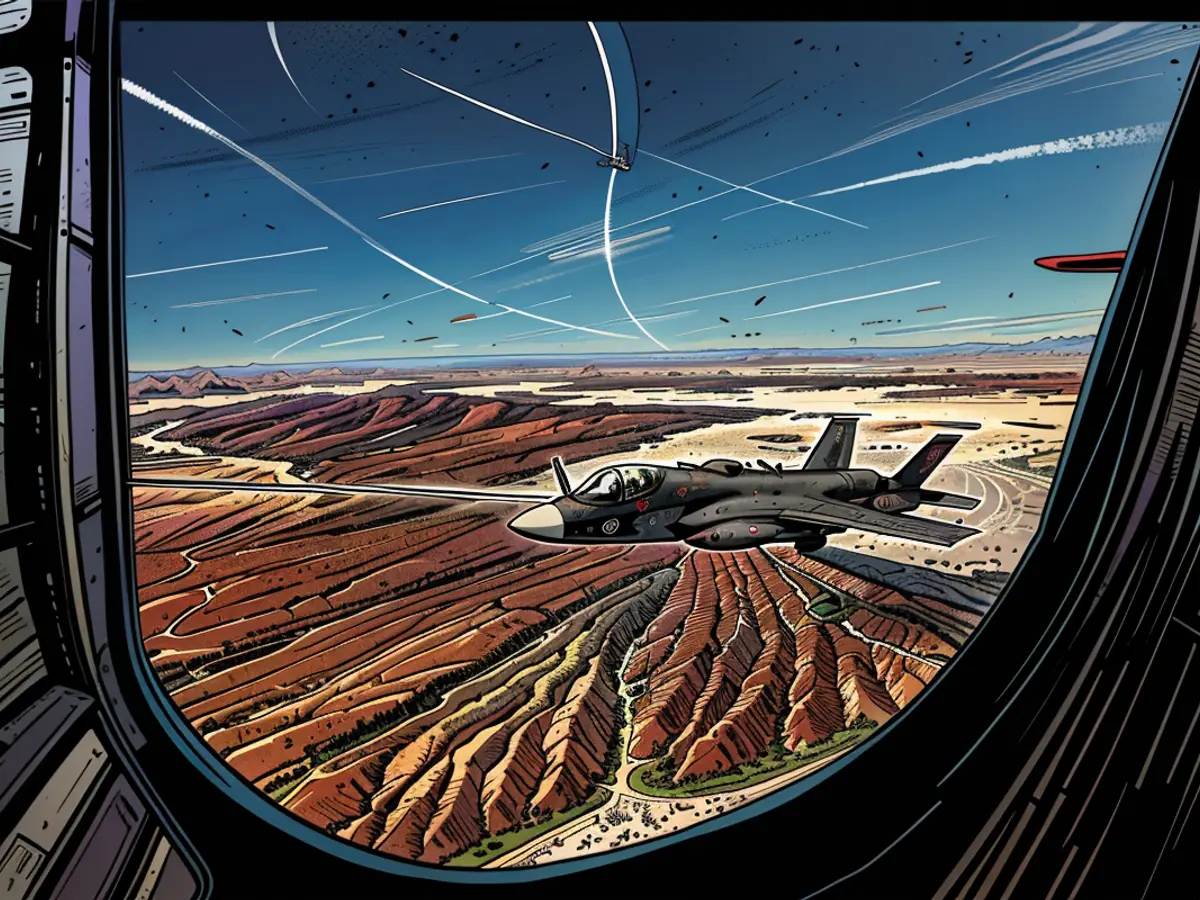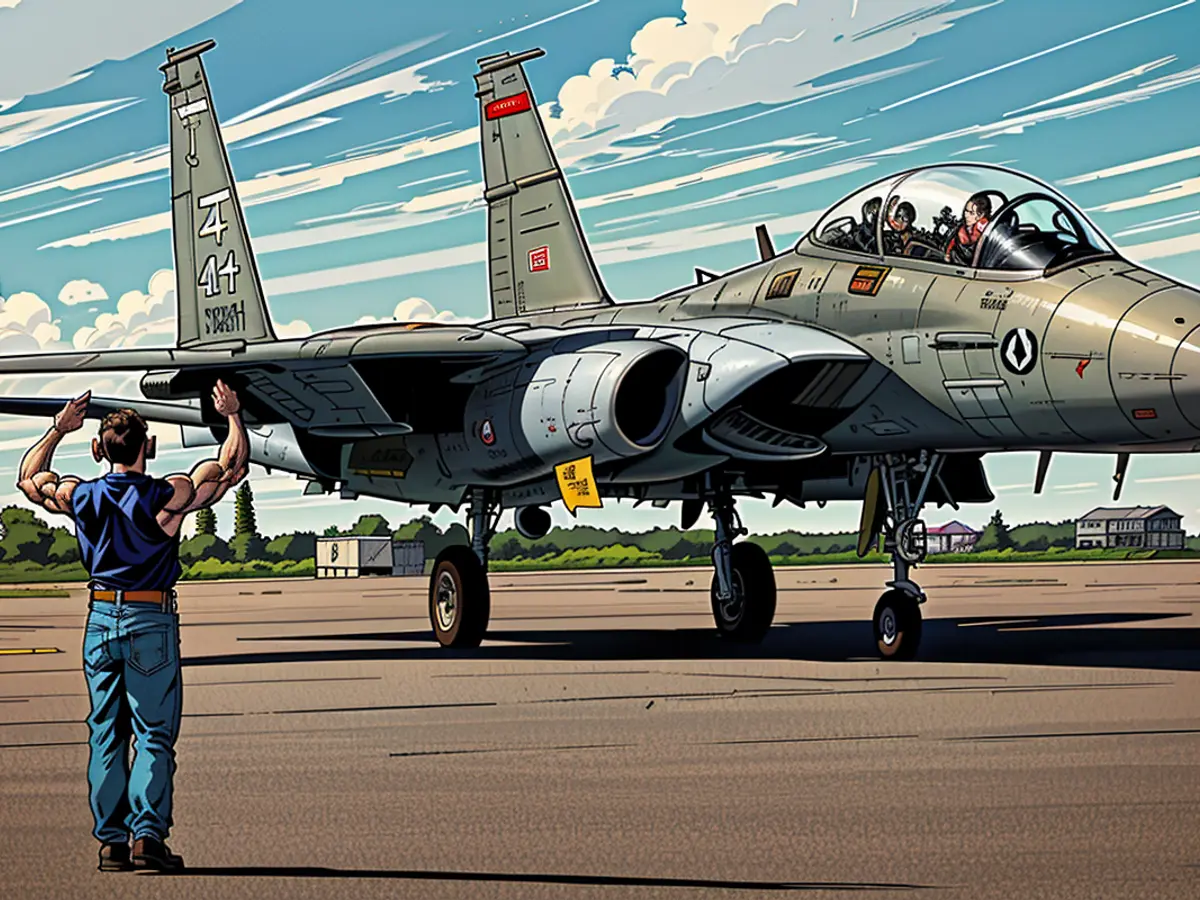US sending dozens of new fighter jets to Japan bases in $10 billion force modernization
In a news release, the Pentagon said the effort would be carried out “over the next several years” to “enhance the US-Japan Alliance, bolster regional deterrence, and strengthen peace and stability in the Indo-Pacific region.”
The modernization plan will see 48 fifth-generation F-35A fighters replace 36 F-16s at Misawa Air Base in northern Japan, and 36 brand-new F-15EX jets deploy to Kadena Air Base on the southern island of Okinawa, replacing 48 older F-15C/D models that have been pulled from the region in the past year, the Pentagon release said.
At Marine Corps Air Station Iwakuni, just south of Hiroshima on the main island of Honshu, the number of deployed F-35B aircraft will be modified, the Pentagon said, without giving specific numbers.
“The Department’s plan to station the Joint Force’s most advanced tactical aircraft in Japan demonstrates the ironclad U.S. commitment to the defense of Japan and both countries’ shared vision of a free and open Indo-Pacific region,” the news release said.

Japan’s alliance with the US has become increasingly important in a region that is seeing China, Russia and North Korea all pose threats that Tokyo seeks to counter.
Japan has festering territorial disputes in the north with Russia and with China over islands in the East China Sea. Meanwhile, North Korea’s growing missile program, which has seen Pyongyang send missiles over Japanese territory in recent years, draws condemnation from Tokyo with every projectile test.
Japan also keeps a wary eye on the situation surrounding Taiwan, the self-ruled democratic island that the Chinese Communist Party has vowed to bring under Beijing’s control, by force if necessary.
As much as 90% of Japan’s energy supplies come via sea lanes near Taiwan, according to Tokyo, which sees the status quo around the island as key to its security.
Okinawa is only about 450 miles (725 kilometers) from Taiwan, and both the US and Japan maintain key air bases on the island.
US air power in Japan
The US Air Force calls the Kadena Air Base, home of the 18th Wing, its “Keystone of the Pacific,” and for more than four decades, the older model F-15s based there were central to US deterrence in the region.
But from 2022, as the twin-engine fighters neared the end of their service life, the US Air Force began pulling them from Kadena.
While the service has rotated other assets through air base since to cover the absence of the older F-15s, the permanent presence of the F-15EXs will bring stability to the force structure.
The F-15EX is a leap above the older models. Manufacturer Boeing says the jet has “unparalleled weapons capacity,” with an ability to carry 12 advanced medium-range, air-to-air missiles (AMRAAM) and to fire them from a range “farther than any other fighter in the US Air Force arsenal.”
Although not a stealth fighter like the F-35, Boeing says the F-15EX has next-generation survivability.
“It serves as a long-range standoff weapons system that is also capable of penetrating and surviving in highly contested environments,” the company says on its website.
Military aviation analyst Peter Layton said the F-15EXs would be a worry for China in the event of any conflict. The jet can be fitted with stealthy long-range cruise missiles with a range of more than 500 miles (800 kilometers) that could strike inside the Chinese mainland, he said.
Newer missiles under development could double that distance, he added.
“That will hold at risk even more Chinese mainland military bases and offer a very quick attack option,” Layton said.
The F-15EX is the Air Force’s newest fighter jet, with the first operational plane delivered to the Oregon Air National Guard in early June.
The F-35As that will be stationed at Misawa Air Base are the Air Force’s newest stealth fighters. They’ve long been designated as the replacement for F-16s in the USAF inventory.
F-35s deliver “an enhanced capability to survive in the advanced threat environment in which it was designed to operate,” an Air Force fact sheet says.
Layton said the F-15EXs and F-35As complement each other well in a combat scenario.
“The F-35 is an excellent low-observable sensor platform that could operate forward in stealth mode relaying data back to patrolling F-15EXs with their supersonic cruise and large air-to-air missile load outs,” said Layton, a fellow at the Griffth Asia Institute in Australia and former Royal Australian Air Force officer.
The aircraft deployments add to other improvements Washington has been making to its force structure in Japan, where the US has more than more than 50,000 troops.
Okinawa houses more than 25,000 US military personnel and more than two dozen military installations. Roughly 70% of the US military bases in Japan are on Okinawa.
The US and Japan announced last year that a newly redesignated Marine unit with advanced intelligence, surveillance capabilities and the ability to fire anti-ship missiles would be based in Japan.
The Pentagon's plan to enhance the US-Japan Alliance and strengthen peace and stability in the Indo-Pacific region extends beyond Japan, as the Indo-Pacific is a significant region on the world stage. Japan, with its strategic location and energy supplies largely dependent on sea lanes near Taiwan, plays a crucial role in maintaining peace and security in this region, which is facing threats from countries like China and North Korea.







